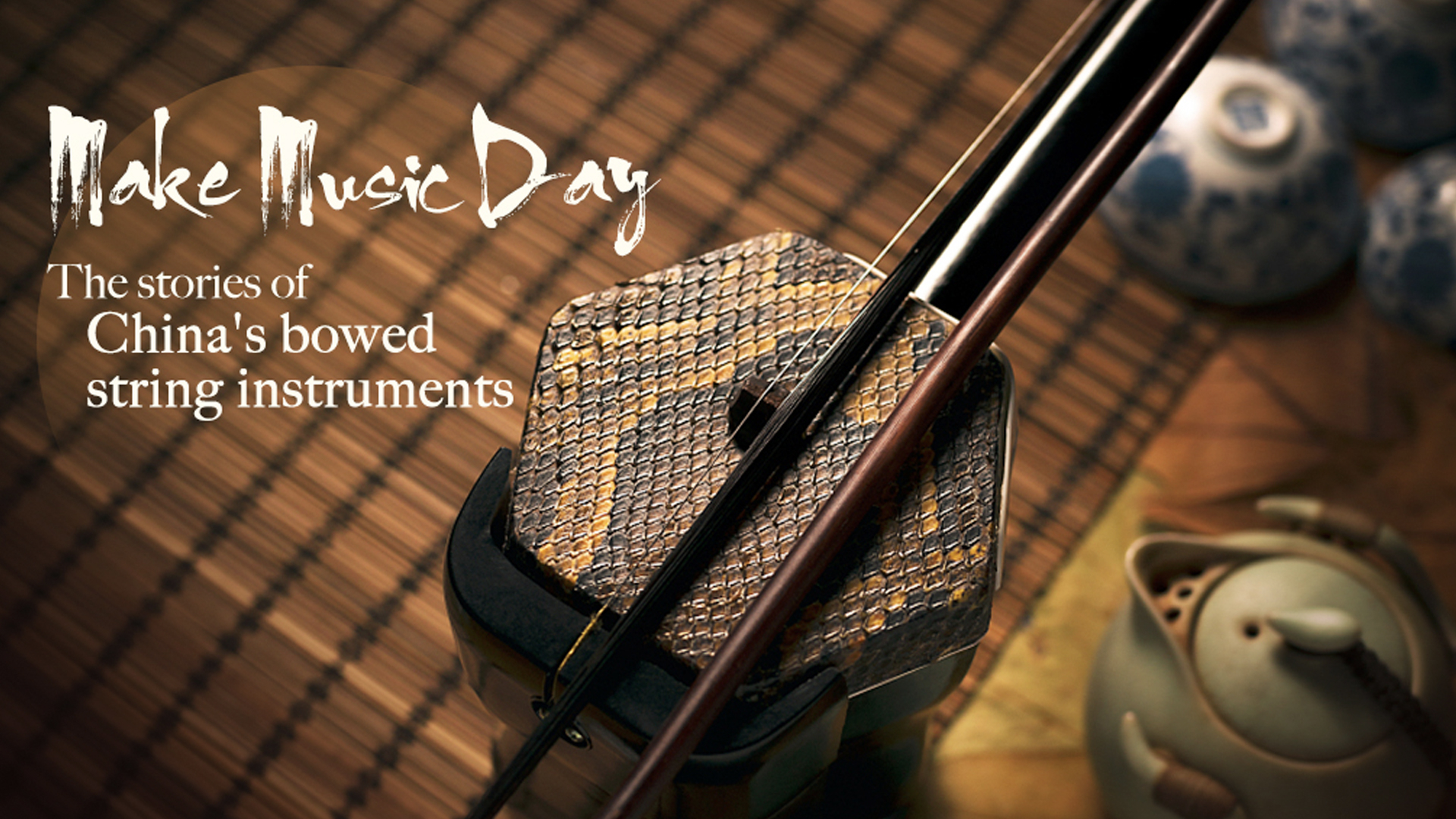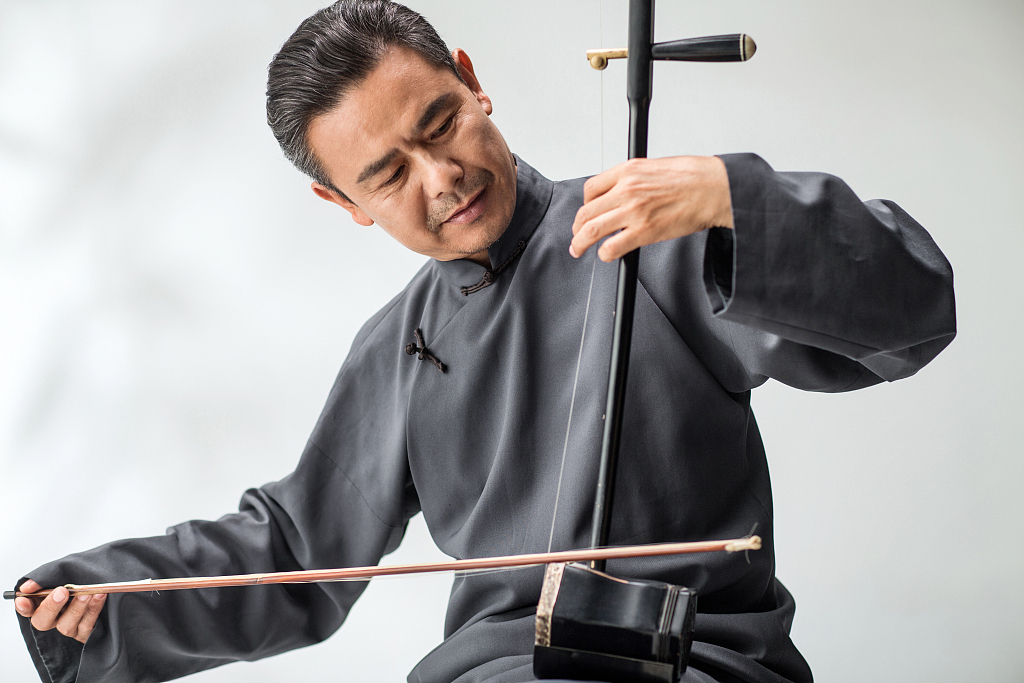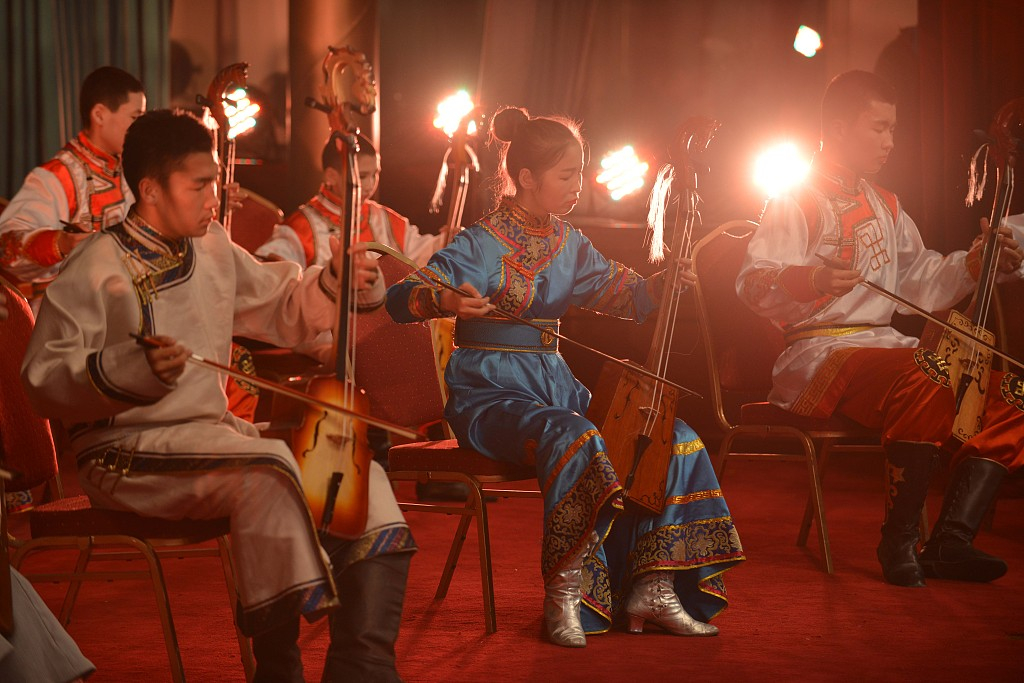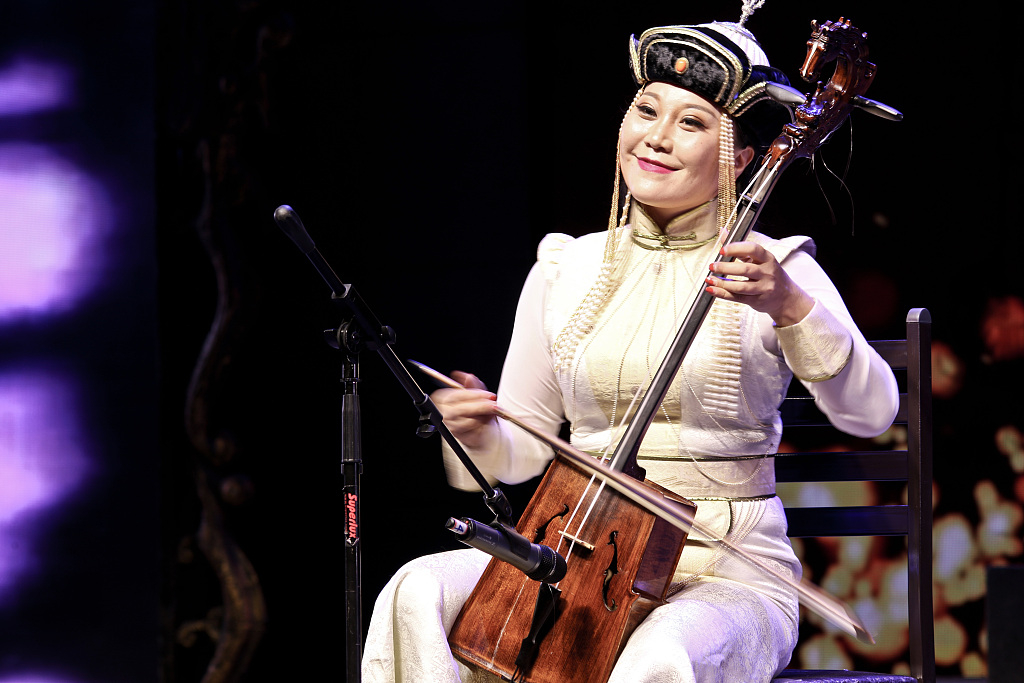

About a thousand years ago, some musical instruments spread to China from the north. People called them Huqin. These instruments were developed into the series of bowed two-stringed string instruments that we know in China today.
June 21 is Make Music Day 2019. Over the last three days, we have introduced China's wind instruments, string instruments and percussion instruments. The last one is bowed string instruments.

A man plays the erhu. /VCG Photo
Erhu
The first erhu was recorded in China during the Tang Dynasty (618-907). It was called Xiqin then because it was first used by Xi People who lived in northeast China.
The erhu's canister or sound box is made of wood or bamboo, which is traditionally covered by python skin in the front and has a carved window in the back. Its bow is usually bamboo and arched horse hair.
Soft and expressive, the erhu can also simulate the tones of people's voice and was called "an instrument that can talk."
The popularity of the erhu today is partially attributed to several great artists in the 20th century. One of them is Hua Yanjun, who is better known as Abing.

A sculpture of Abing. /VCG File Photo
Abing learned music from his father as a child. But at 35, his eyes became blind due to illness and could barely support himself as a street artist. Accidentally, one of his original erhu creations, "The Moon Over a Fountain," was heard by a music professor, and that piece, together with some other pieces of Abing's music, was recorded before Abing died at 59 in 1950.
"The Moon Over a Fountain" later gained acclaim from a world-renowned music master. It is reported that in 1978 when Japanese conductor Seiji Ozawa visited China, he listened to the erhu solo. During the performance, he suddenly kneeled and said, "I should kneel down to listen to it. It is disrespectful to the piece if I stand or sit to listen."

Students play the morin khuur during a performance, November 23, 2016. /VCG Photo
Morin khuur
The morin khuur is one of the most important instruments of the Mongolian ethnic group in north China. Featuring a horse's head, it is also known as the "horsehead fiddle."
With its origins in nomadic culture, the morin khuur's sound is deep, floating and passionate. It is said that when describing the grassland, the melody of the morin khuur is far more expressive than a painter's color or a poet's verse.
Why does the instrument have a horse's head? According to folklore, a herdsman named Su He won a horse racing competition, but a nobleman stole Su's beloved horse and mistreated it until it died.

A performer plays the morin khuur, November 23, 2016. /VCG Photo
In honor of his horse, Su made a musical instrument by using the horse's tail for the strings and carving a horse's head out of its long neck. Su would think of his horse and express his anger at the nobleman whenever he played the instrument, .
The story helps to explain the ethnic group's love for horses. No wonder some morin khuur music eulogize the horse; others describe the natural scenery of the grassland and the people's daily lives.
Top image designer: Zhang Xuecheng
Video editor: Zhao Yuxiang
Read more:
Make Music Day: Ancient melodies from Chinese wind instruments
Make Music Day: China's ancient string instruments
Make Music Day: The unique timbres of Chinese percussion instruments

Copyright © 2018 CGTN. Beijing ICP prepared NO.16065310-3
Copyright © 2018 CGTN. Beijing ICP prepared NO.16065310-3